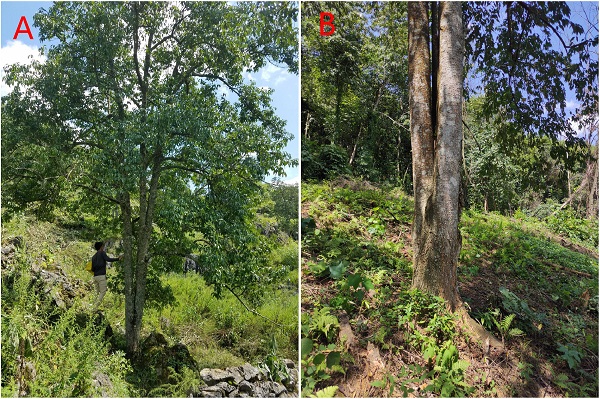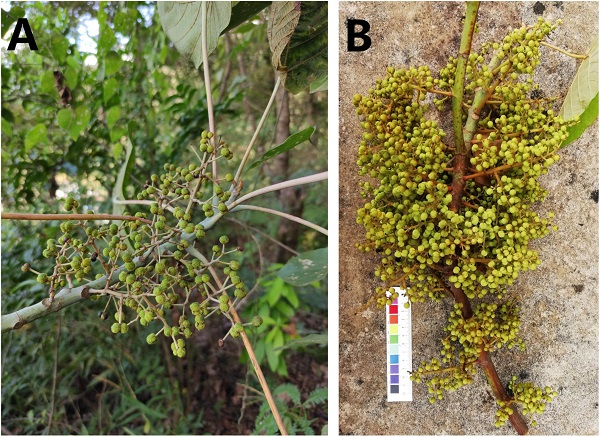Nervonic acid (NA) is a very long-chain monounsaturated fatty acid with pharmaceutical and nutraceutical functions. It plays an important role in treating several neurological disorders. NA is largely harvested from sharks, which is destructive and unsustainable.Recently, NA-containing plant seed oils have been identified in approximately 200 plant species. Plant seed oils is one major source.
In a study published in Plant Diversity, researchers from Xishuangbanna Tropical Botanical Garden (XTBG) analyzed the seed fatty acid composition of Malania oleifera (a medium-sized tree in the in Olacaceae family) and five Macaranga species (M. adenantha, M. indica, M. denticulata, M. henryi, M. kurzii).
The researchers collected seeds from six populations of M. oleifera, four populations from M. adenantha, and four populations from M. indica. To evaluate germplasm diversity, they analyzed the fatty acid composition, seed oil content, and seed weight.
They identified three woody plants with high amounts of NA-enriched seed oil, Malania oleifera, Macaranga adenantha, and M. indica. They found that M. oleifera had the largest seeds, highest oil content, highest level of NA, and lowest erucic acid (EA).
Compared with M. adenantha, although M. indica contained a slightly lower level of NA in seed oil, it had significantly higher oil content and seed yield. “This is the first report Macaranga indica seeds accumulate high levels of oil and NA,” said TIAN Bo of XTBG.
The germplasm variation is probably related to habitat. Populations growing on rock mountains had higher oil content and NA levels. Germplasm diversity was detected among populations of M. adenantha, but no significant differences were detected among populations of M. indica.
M. indica is a tropical pioneer tree species that is easy to cultivate and grows rapidly, thus making it a potential candidate for the development of NA products.
“Our study will contribute to germplasm resource nursery building and selection and breeding program construction to improve the development of NA-enriched plants,” said TIAN Bo.
Contact
TIAN Bo Ph.D
Key Laboratory of Tropical Plant Resources and Sustainable Use, Xishuangbanna Tropical Botanical Garden, Chinese Academy of Sciences, Menglun 666303, Yunnan, China
E-mail: tianbo@xtbg.ac.cn

Habitat images of Malania oleifera. (Image by HE Xin)

Infructescence of Macaranga adenantha (A) and M. indica (B).(Image by HE Xin)


